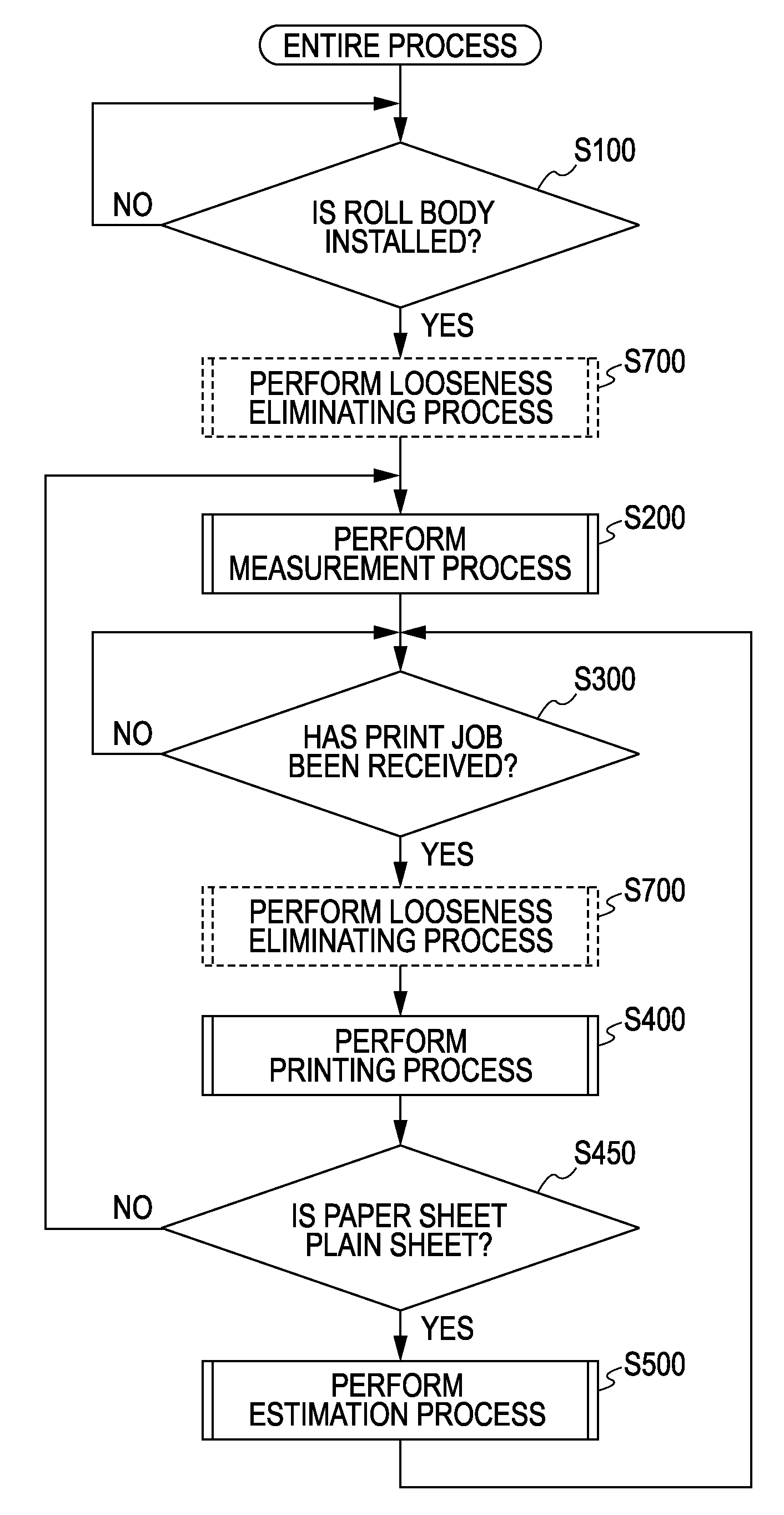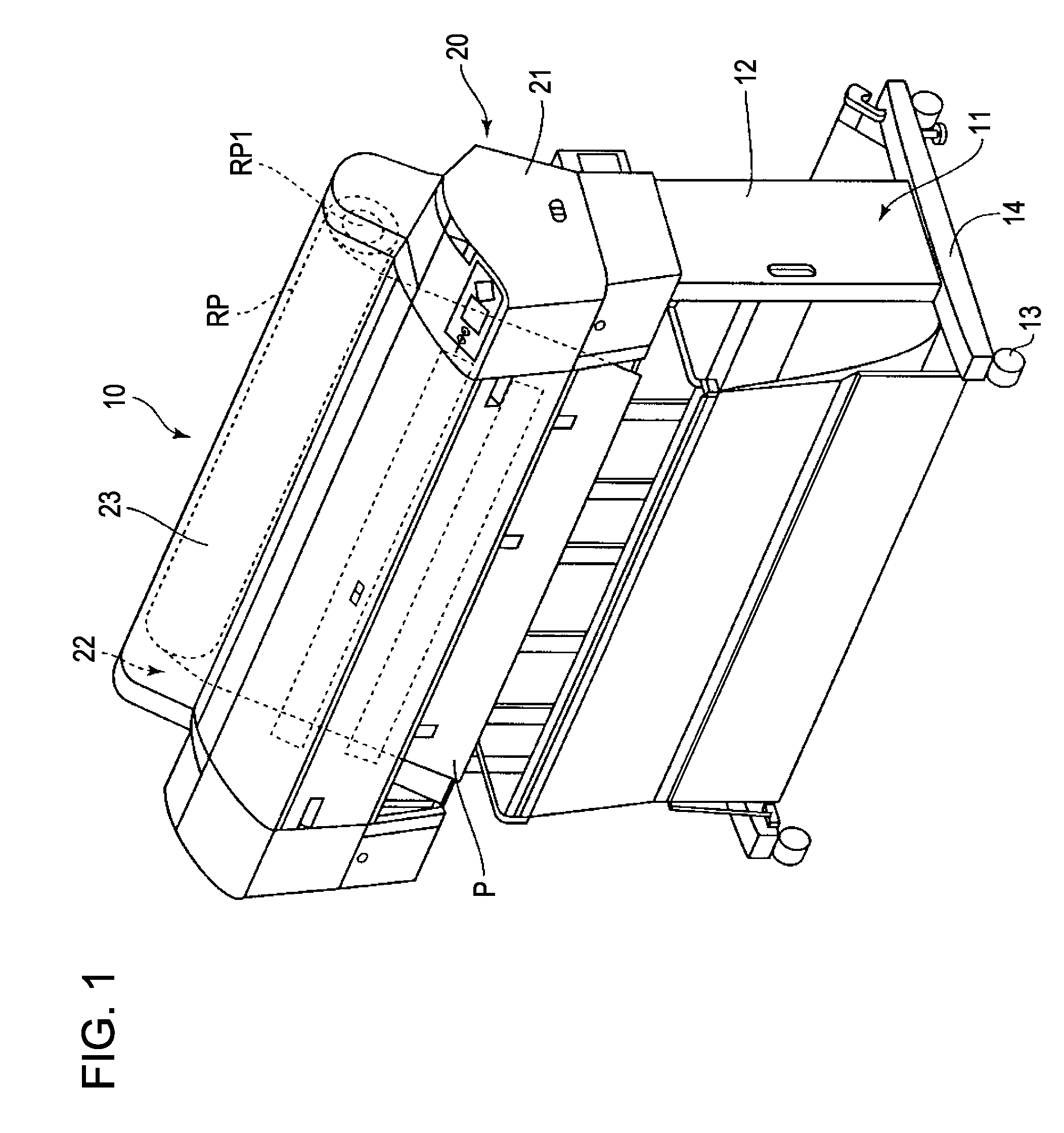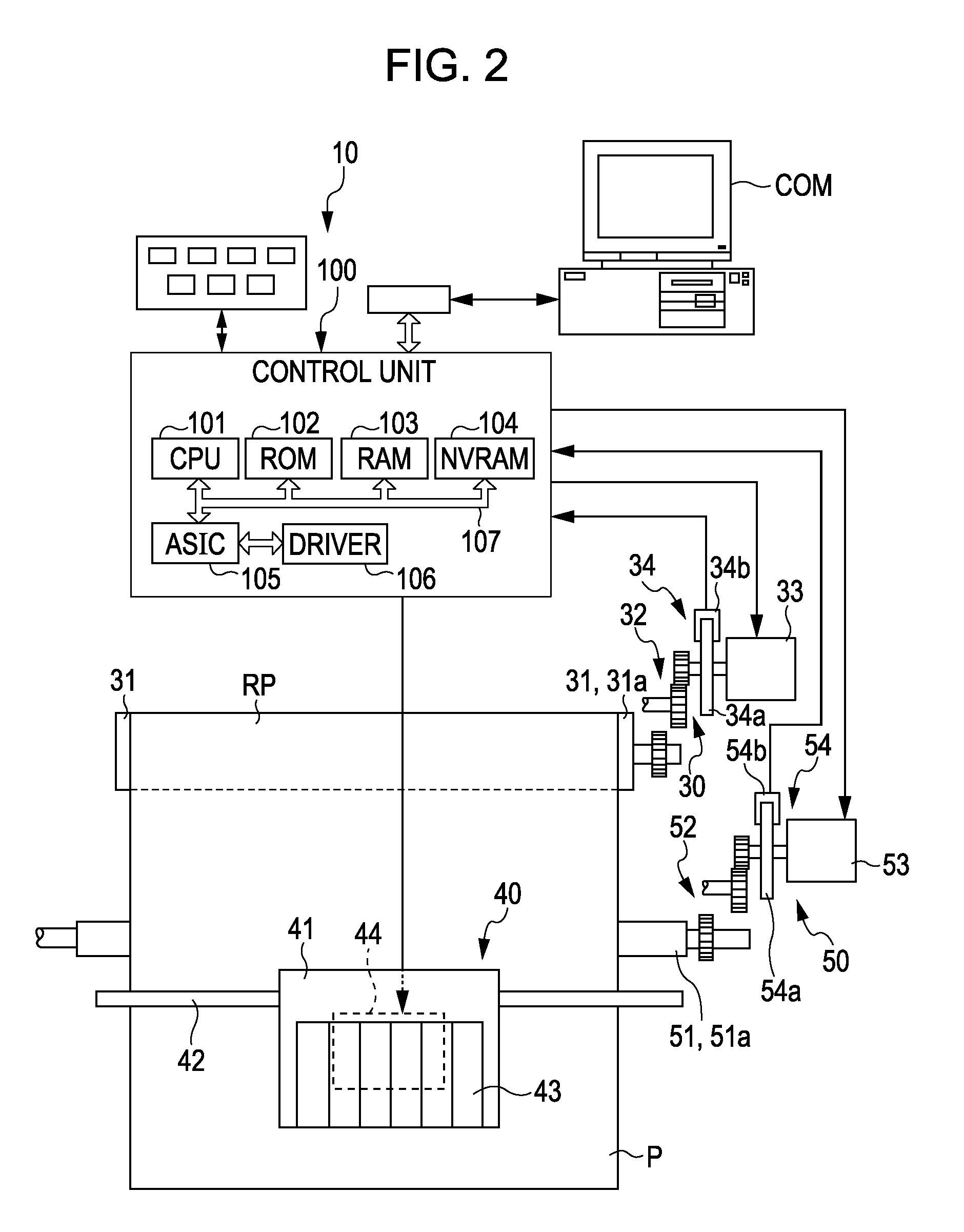Printing method and printing apparatus
a printing apparatus and printing method technology, applied in printing, typewriters, other printing apparatus, etc., can solve the problems of paper sheet loosening, image quality deterioration, time needed to eliminate paper sheet looseness, etc., and achieve the effect of appropriately eliminating paper sheet looseness
- Summary
- Abstract
- Description
- Claims
- Application Information
AI Technical Summary
Benefits of technology
Problems solved by technology
Method used
Image
Examples
Embodiment Construction
[0042]Hereinafter, embodiments of the invention will be described in the following order.
[0043]1. Configuration of Printer
[0044]2-1. Entire Process
[0045]2-2. Measurement Process
[0046]2-3. Estimation Process
[0047]2-4. Printing Process
[0048]2-5. Roll Control Process
[0049]2-6. Looseness Eliminating Process
1. Configuration of Printer
[0050]Hereinafter, a printer 10 as a printing apparatus (fluid ejecting apparatus) according to an embodiment of the invention and a control process thereof will be described. The printer 10 according to this embodiment, for example, is a printer for printing a large-sized paper sheet that is equal to or larger than A2 of the JIS standard. In addition, the printer according to this embodiment is an ink jet printer. The ink jet printer may employ any ejection method for ejecting ink. In addition, in the description below, the lower side denotes a side on which the printer 10 is mounted, and the upper side denotes a side that is apart from the side on which th...
PUM
 Login to View More
Login to View More Abstract
Description
Claims
Application Information
 Login to View More
Login to View More - R&D
- Intellectual Property
- Life Sciences
- Materials
- Tech Scout
- Unparalleled Data Quality
- Higher Quality Content
- 60% Fewer Hallucinations
Browse by: Latest US Patents, China's latest patents, Technical Efficacy Thesaurus, Application Domain, Technology Topic, Popular Technical Reports.
© 2025 PatSnap. All rights reserved.Legal|Privacy policy|Modern Slavery Act Transparency Statement|Sitemap|About US| Contact US: help@patsnap.com



